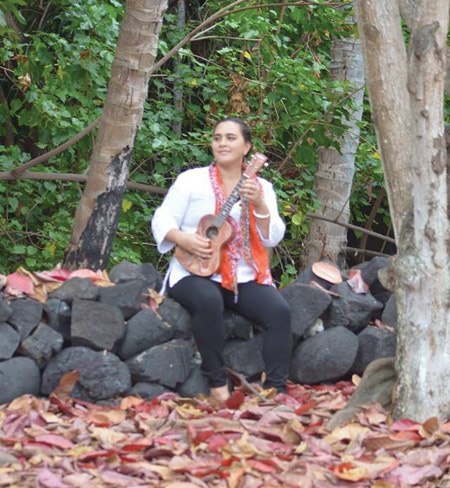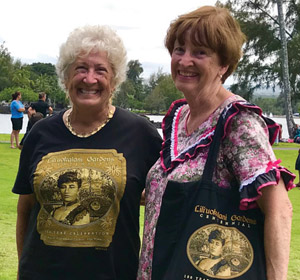
Ladies of Aloha: K.T. Cannon-Eger and Dinnnie Kysar
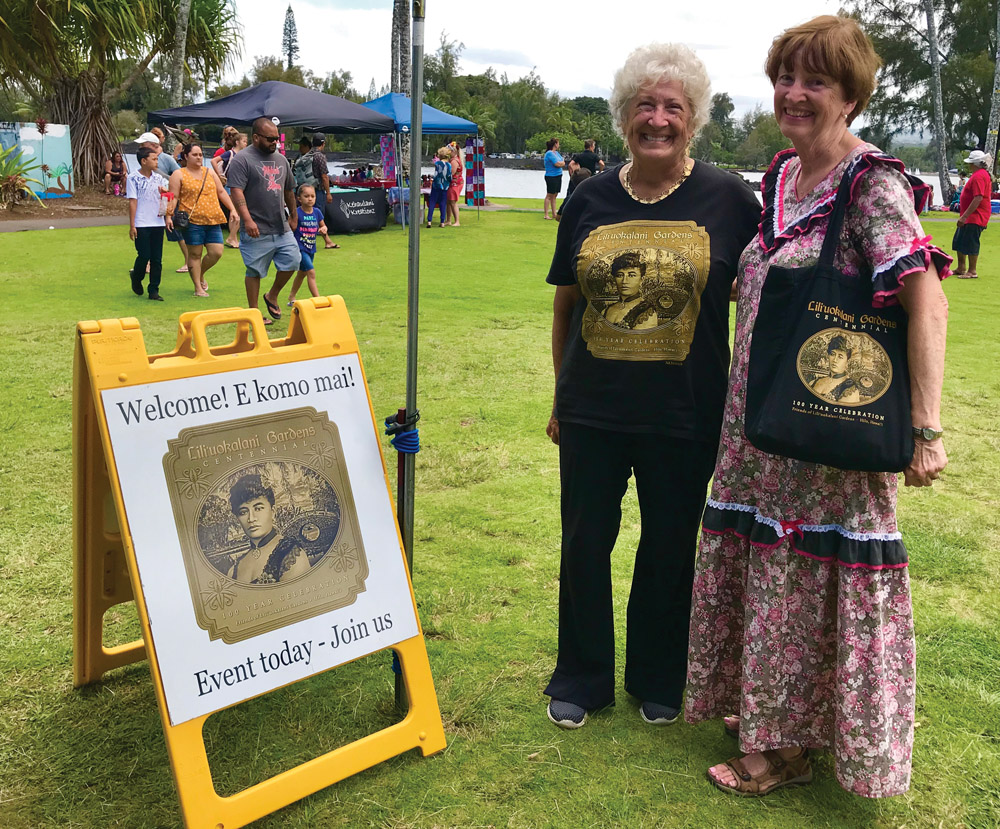
By Marciai Timboy
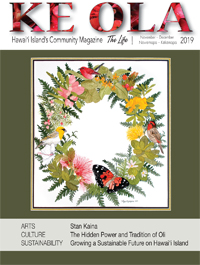
“When ordinary people decide to do extraordinary things, they transform their lives and the lives of others around them.” —Oprah Winfrey
Daily, Hawai‘i Island residents and visitors engage in diverse activities in beautiful settings. While they enjoy our island’s offerings, a few dedicated volunteers give their time and energy as they tirelessly work to make these things happen.
Volunteering is important for many reasons, and new studies make it clear that volunteerism saves resources for the community; it meets critical, local needs; and it translates into better physical and mental health for those who give their time.
Two exemplary volunteers are the driving forces behind a beloved and historically significant community park, and the hula performances and cultural activities at Hilo pier and the downtown bandstand. Both ladies are retirees with long and productive careers, and have called Hawai‘i home for more than 30 years.
K.T. and Lili‘uokalani Park and Gardens
In the spring of 1917, the Territorial Legislature passed Act 53, setting aside 17 acres at Makaoku for a park to be named in honor of the Queen. Governor Lucius Pinkham signed the act into law in April. Ground was broken for Lili‘uokalani Gardens in November 1917, the same month she died. Lili‘uokalani Gardens opened to the public in 1919.
K.T. (Katharine Theresa) Cannon-Eger explains, “I don’t know, but I’m compelled to do things sometimes. I believe places call us. This place [Lili‘uokalani Park and Gardens] was calling for some attention. I answered a call.”
K.T. was born in Santa Barbara, California, and moved to Michigan as a young child. She remembers, “I was always interested in gardens and landscaping. My mother would quiz us (siblings) on plants.” Years later, K.T. discovered that her grandfather had a Japanese garden at a home he built in Bel Air, California, and she attributes her lifelong interest in the traditional gardening genre to this “Japanese garden lineage.”
K.T.’s grandfather visited the 1904 fair in St. Louis and photographed the Japanese exhibit. K.T. and her husband Bill vacationed on Maui in the mid-1970s. At the time, Bill was a former reporter turned political campaign manager and K.T. was his business partner.
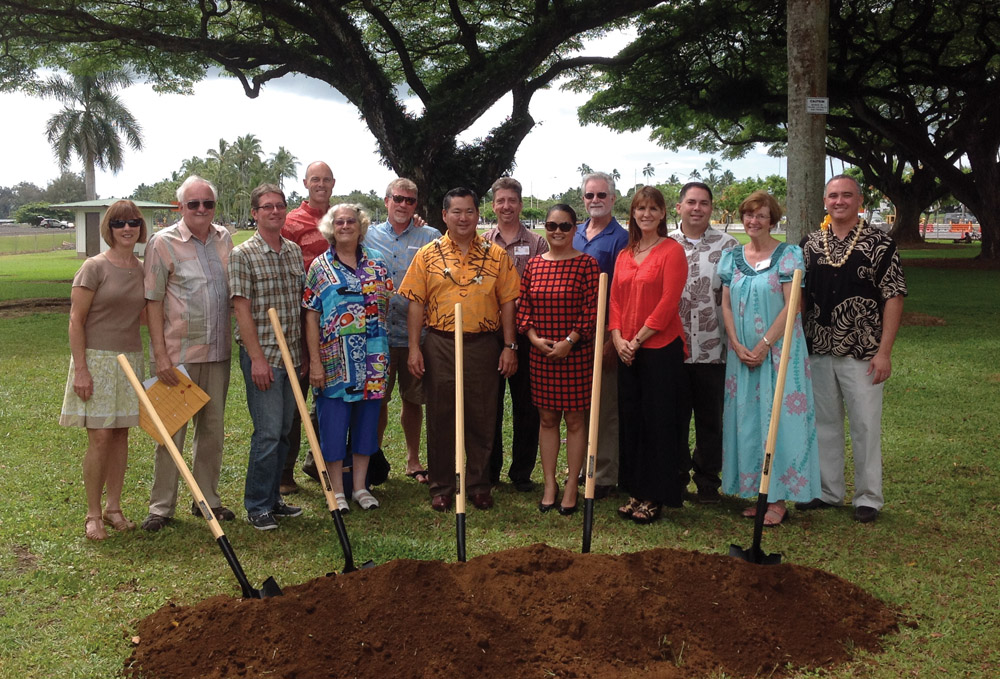
They relocated to Maui in 1976 and lived there for 13 years. In 1989, when their long-time Maui rental went up for sale, they made the move to Hawai‘i Island, buying a home in Hawaiian Paradise Park and now, she says, “We’ve lived in HPP for 30 years this year!” Over the years, while her husband branched off into photography, graphic arts, and printing, K.T. found fulfilling work as a gardener, working alongside masters in the field. K.T.’s quest to hone her gardening techniques led her to pursue education through workshops and conferences. She became a founding member of the North American Japanese Garden Association. Periodicals such as the Journal of Japanese Gardening further fueled her instinctual horticultural knowledge and passion.
K.T. took it upon herself to answer the “call” to foster and maintain Lili‘uokalani Gardens by gathering information to start the Friends of Lili‘uokalani Gardens. It was established in early 2012, and is a 501(c)3 nonprofit organization dedicated to improving and maintaining a 24-acre cultural landscape. The organization operates on three paths: maintenance, capital improvements, and centennial events.
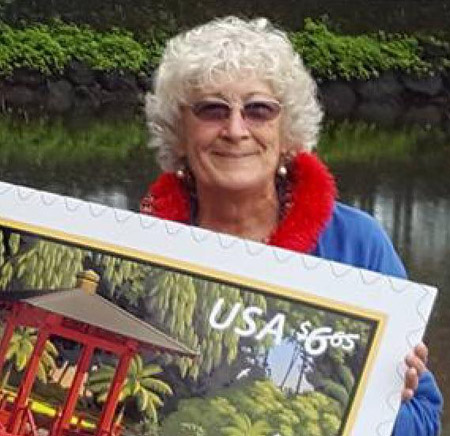
The major goals of the organization are to promote beauty through ornamental horticulture, floriculture, and arboriculture; to develop a program of education; to improve and advance the aesthetic and physical beauty of Hilo; to disseminate information in the fields of ornamental horticulture, floriculture, arboriculture, and botany; and to develop relationships with other nonprofit public gardens in North America. Lili‘uokalani Gardens is a public park in Hilo and is maintained by the County of Hawai‘i Parks and Recreation Department. It is comprised of Mokuola (Coconut Island), Nihon Koen (the Japanese-style landscape), Rakuen (Happiness Park behind Suisan), and Isles (a popular fishing area fronting Hilo Bay Cafe).
Whereas the County is the major caretaker of the park, the Friends of Lili‘uokalani Gardens (FOLG) and K.T. spearhead projects and events to foster and maintain what K.T. describes as “a community treasure.” She notes that the park is a historic site, and that most of the projects are “repairs versus restoration.” Therefore, finding old photos is important as to the intent of garden designs throughout the park’s history. Preserving the Hawaiian and Japanese design of the site is the guideline for the park’s projects, as well as to engage the community’s support. The most recent project was to repair the Japanese red bridge to coincide with the park’s 20th annual Queen Lili‘uokalani birthday celebration on September 7, 2019. K.T. researched and found old photos of the bridge, which were used as a template. Building community partnerships is vital; a new stone feature with paths and benches is a Lions Legacy Project, cared for by six Lions Clubs in the area.
K.T. reports, “It’s been a daunting and humbling experience to provide deep and abiding care for a place. It would not happen without a working board of directors and a caring community.”
Dinnie and Destination Hilo

Destination Hilo was founded in 1986 as a private nonprofit corporation to promote tourism in East Hawai‘i and the island of Hawai‘i. Its mission is to promote sustainable and responsible tourism, perpetuate authentic Hawaiian culture, and improve quality of life for residents by contributing to a healthy social and economic culture.
Deane (Dinnie) Kysar grew up in a suburb of New York City. Tourism and Hawai‘i apparently were her destiny. Her father had his own business researching world travel trends and markets, and was author of the Travel Industry World Yearbook: The Big Picture, which he published annually. He traveled widely, encouraging tourism as a means of promoting the economy in the US and around the world. She attended Camp Aloha Hive in Vermont as a child. The camp was founded in the early 20th century by Harriet and Edward Gulick, who had grown up in Hawai‘i missionary families. The camp philosophy, names, and songs were influenced by Hawaiian roots. Her mother had attended the camp as a girl, as well. As an English major in college, with minors in history and geography, Dinnie developed an interest in economic geography. Her career path, however, led to finance.
Asked when and why she moved to Hawai‘i, Dinnie shares, “My husband, Gordon Wentworth, was in the Navy and we moved to Hawai‘i in 1966. He was stationed above Pearl Harbor as an air intelligence officer at CINCPACFLT [Commander in Chief of US Pacific Fleet]. We loved Hawai‘i and when his tour was up, we decided to stay, and moved to Kāne‘ohe to raise our son. I joined the volunteer tutoring program and also did some substitute teaching; however, it was soon apparent that I would need a full-time job. Yup, living in Hawai‘i required both of us to have jobs. C. Brewer in Honolulu hired me as their receptionist. I was with that company for 23 years, moving into the treasurer’s office, completing an MBA at University of Hawai‘i at Manoa, becoming an assistant treasurer, and also working in human resources until the headquarters moved to Hilo and most of us were severed. I went to work at Bank of Hawai‘i and eventually became a credit analyst and worked with businesses in Honolulu and on Hawai‘i Island.”

Dinnie’s first husband passed away in 1997. She later met Gary Kysar while walking her dog, and in 1999 they married. Gary was originally from Idaho and moved to Hawai‘i in the 1980s. With the intention of retiring, they found a beautiful spot on the Hāmākua coast. In 2003, they built their house and moved to Hakalau, where Gary set up a cow/calf operation; however, the active couple wasnʻt quite ready to retire. Gary found work with engineering at North Hawai‘i Community Hospital, and Dinnie joined the University of Hawai‘i at Hilo’s Conference Center. She was introduced to “Hawaiian EDventure,” under the Conference Center’s umbrella, which provided educational travel opportunities for school groups. She also became involved with Elderhostel (now called the Road Scholar Program), which presents visitors to Hawaiian culture, natural sciences, volcanoes, astronomy, oceanography, and more. She became familiar with Destination Hilo while working at the Conference Center through her boss, Judith Fox-Goldstein, who at the time was the Destination Hilo’s president. Upon retiring from the Conference Center in 2007, Dinnie was encouraged by Judith to join the Destination Hilo board of directors.
Dinnie has volunteered in many capacities since she was a teenager. She explains, “It’s in my DNA! I’m retired. I have time to dedicate to this organization. I have an awesome board of directors and support from the community, the County of Hawai‘i and Hawai‘i Tourism Authority.”
Destination Hilo offers free hula shows and cultural events every Tuesday from 11am to noon on Hula Tuesdays at the Mo‘oheau Bandstand in downtown Hilo, for cruise ships at the Hilo pier, and at various community events and programs throughout Hilo. In doing so, the nonprofit organization has provided employment opportunities for Hawaiian cultural practitioners and community members, supporting the local economy and encouraging interaction between visitors and residents.
Both Dinnie and K.T. have generously volunteered their time, energy, and aloha for Hilo to make it a much better place. Mahalo nui loa to these extraordinary ladies! ❖
Pono Pledge
He pilina wehena ‘ole ke aloha honua.
One’s love for the planet is an inseverable relationship.
- I pledge to be pono (righteous) on the island of Hawai‘i.
- I will mindfully seek wonder, but not wander where I do not belong.
- I will not defy death for breathtaking photos, trespass or venture beyond safety.
- I will mālama (care for) land and sea, and admire wildlife only from afar.
- Molten lava will mesmerize me, but I will not disrupt its flow.
- I will not take what is not mine, leaving lava rocks and sand as originally found.
- I will heed ocean conditions, never turning my back to the Pacific.
- When rain falls ma uka (inland), I will remain high above ground, out of rivers and streams.
- I will embrace the island’s aloha spirit, as it embraces me.
- Lawe i ka maʻalea i kū‘ono‘ono. “Take Wisdom and Make it Deep.”
Take the Island of Hawai‘i Pono Pledge: ponopledge.com
Sponsored by the Island of Hawai‘i Visitors Bureau
For more information:
destinationhilo.com
facebook.com/pg/friendsofliliuokalanigardens/about
